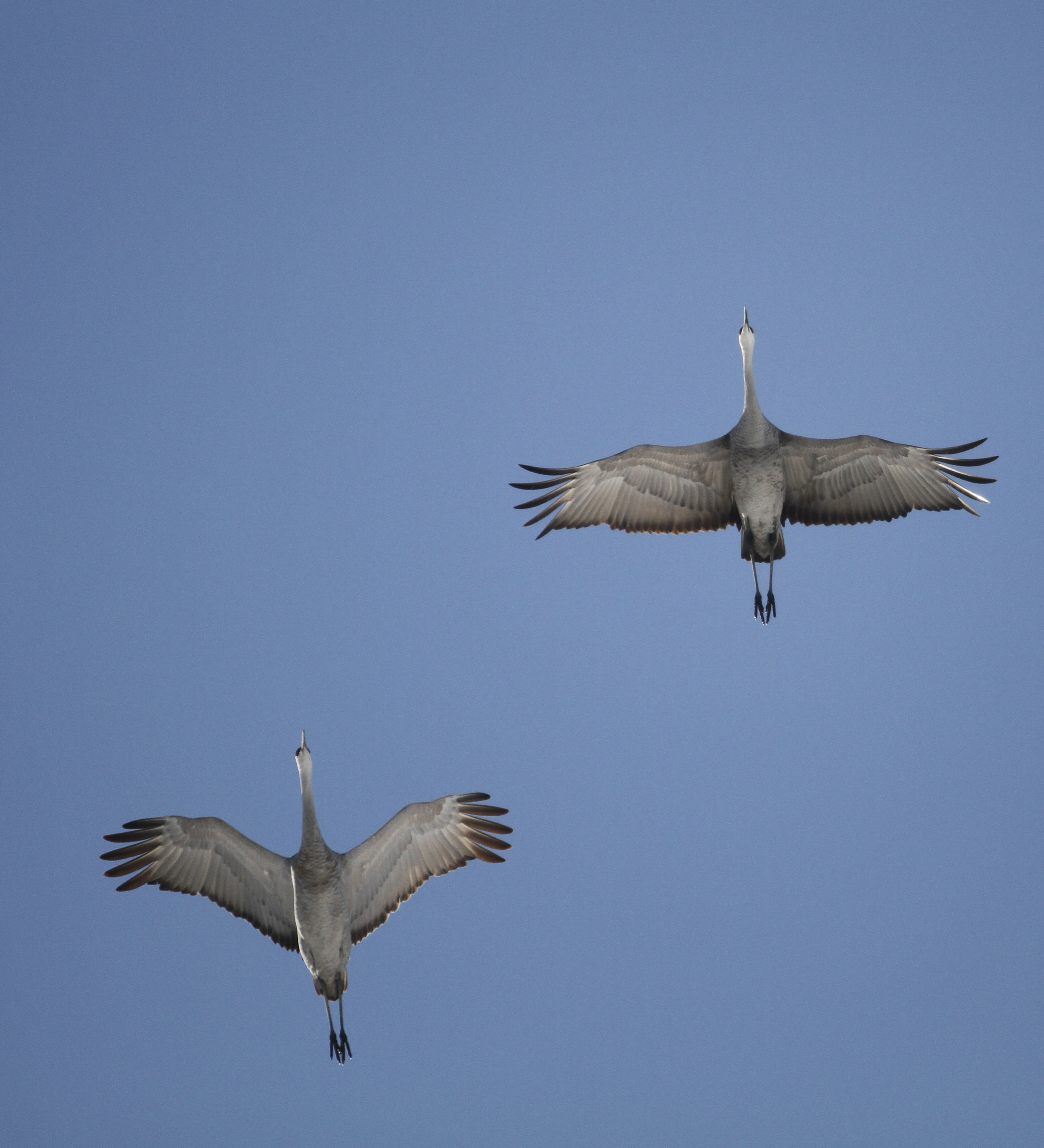Tennessee Fish and Wildlife Commission votes for Sandhill crane hunt
Saturday, August 24, 2013
VIDEO
This story is featured in today's TimesFreePress newscast.
Forget roast turkey or goose. Sandhill crane might be the holiday fowl of choice for 400 Tennessee hunters this December.
The Tennessee Fish and Wildlife Commission voted Friday to approve a sandhill crane hunting season from Nov. 28 to Jan. 1, 2014, in Southeast Tennessee and set other waterfowl rules for the 2014 season. Commission members allowed the sandhill crane hunt despite massive opposition from Tennesseans who answered polls -- and attended the commission's two-day meeting in Knoxville.
The commission received more than 1,000 responses from the public about the crane hunt; 888 opposed it.
Hunters who get one of the 400 permits, which will be dispensed through a hand-pulled lottery in October, will be allowed to kill three sandhills apiece, according Dan Hicks, spokesman for the Tennessee Wildlife Resources Agency.
But it's not all for sport. Sandhills are good eating, Hicks said.
"They taste very similar to a beef product. They primarily eat grain, like a cow. People have called them sirloin in the sky," he said.
The hunting grounds will include all parts of the state south of Interstate 40 and east of Highway 56 -- excluding wildlife refuges and other areas where hunting is prohibited, he said.
The season was first passed by the commission's wildlife committee Thursday, then unanimously adopted by the full commission Friday. It had been tabled for two years previously for commissioners to hear more information.
Those opposed to the hunt are concerned that young, endangered whooping cranes will be mistaken for sandhill cranes, which will further hurt the whooping crane populations.
Hicks says hunters who receive permits will have to get separate hunting and waterfowl licenses and make a perfect score on a waterfowl identification test before they hunt.
The test will be on TWRA's website, and hunters will be able to take it as often as they need to pass, he said.
Axel Ringe, biodiversity chairman of the Tennessee Chapter of the Sierra Club, said the club is disappointed by the commission's decision.
"They are stuck in a mindset where all wildlife is a resource to be used. And they can't seem to get out of that, that there are a lot of people nowadays who see wildlife as something to be appreciated and celebrated," Ringe said.
But Ringe said he is glad the commission made some concessions to conservationists.
"They did throw a bone to the people opposed to the hunt by cutting the proposed number of permits in half. It was 775 [permits] and they reduced that to 400. ... They also reduced the length of the hunt from two months to one month," Ringe said.
The hunt also will stop 17 days before the Hiwassee Wildlife Refuge's Sandhill Crane Festival.
The hunting time also was shortened to sunrise until 3 p.m., so hunters will be able to distinguish the sandhills from endangered whooping cranes. Normal waterfowl hunts run from 30 minutes before sunrise to sunset.
Despite the concessions, Ringe said the wildlife commission needs to be "rebalanced."
"Although the meeting was very polite, and they listened attentively to all the presentations, it was very evident from the beginning their minds were already made up. They shared with us the 888 opposed to having a hunt and yet they chose to ignore that," Ringe said.
Jeff McMillin, chairman of the commission, said Friday the commission is sensitive to the opposition.
"Well, I think the general consensus of the commission is if we went with public opinion to hunt everything, we wouldn't be able to hunt anything in this country," McMillin said. "When federal fish and game decides that a species is abundant enough that a season can occur without hurting the population, I think it's our duty to let that happen."
McMillin said the hunting season ultimately could help the sandhill and whooping crane populations because of the revenue hunting licenses may generate.
He said all but $7,000 of the Hiwassee Wildlife Refuge's more than $200,000 budget came from license fees this year.
"By getting people interested in hunting sandhill cranes more revenue would be available to create more habitats," McMillin said.
Given the stiff penalties for killing an endangered species, McMillin also said hunters will be sure to steer clear of whooping cranes.
"There's jail time and a monetary fine. People are going to be extra careful before they pull that trigger to know it's not a whooping crane," he said.
Contact staff writer Louie Brogdon at 423-757-6481 or at lbrogdon@timesfreepress.com.

